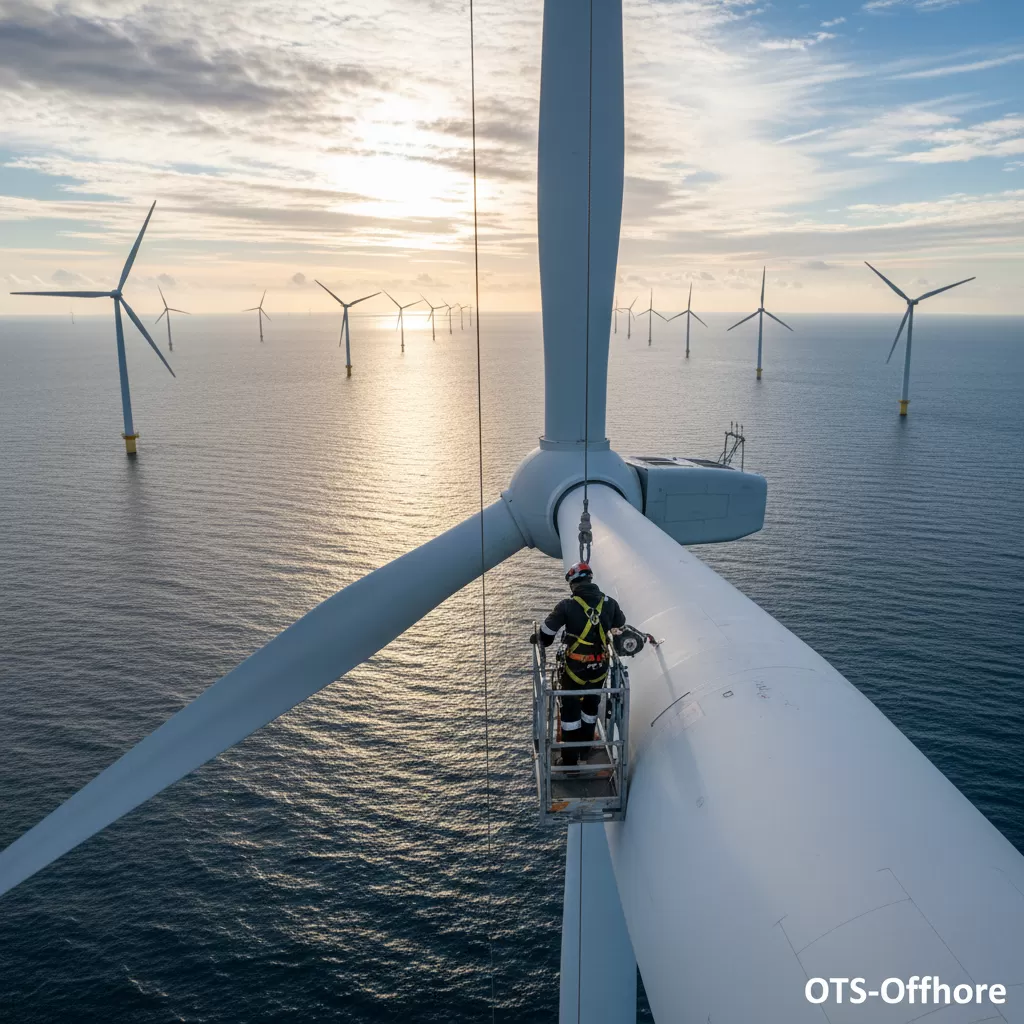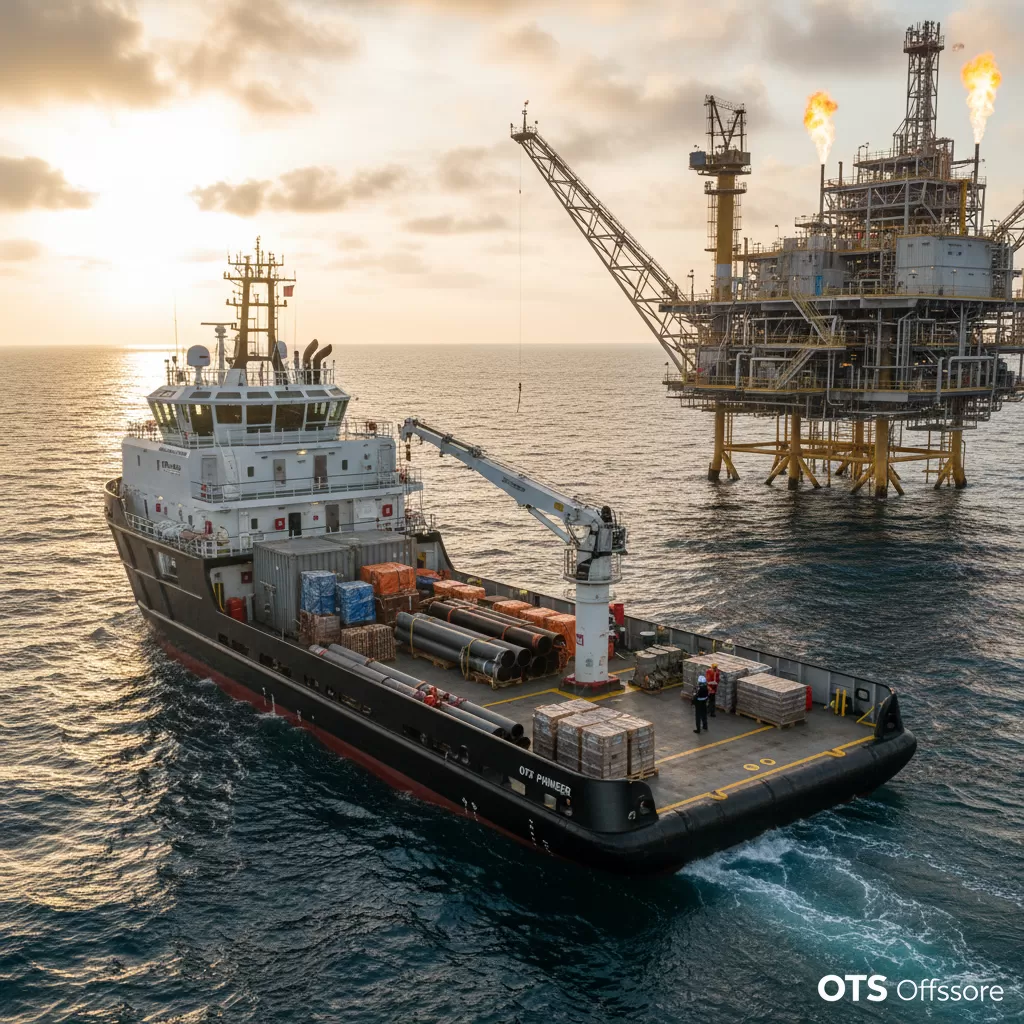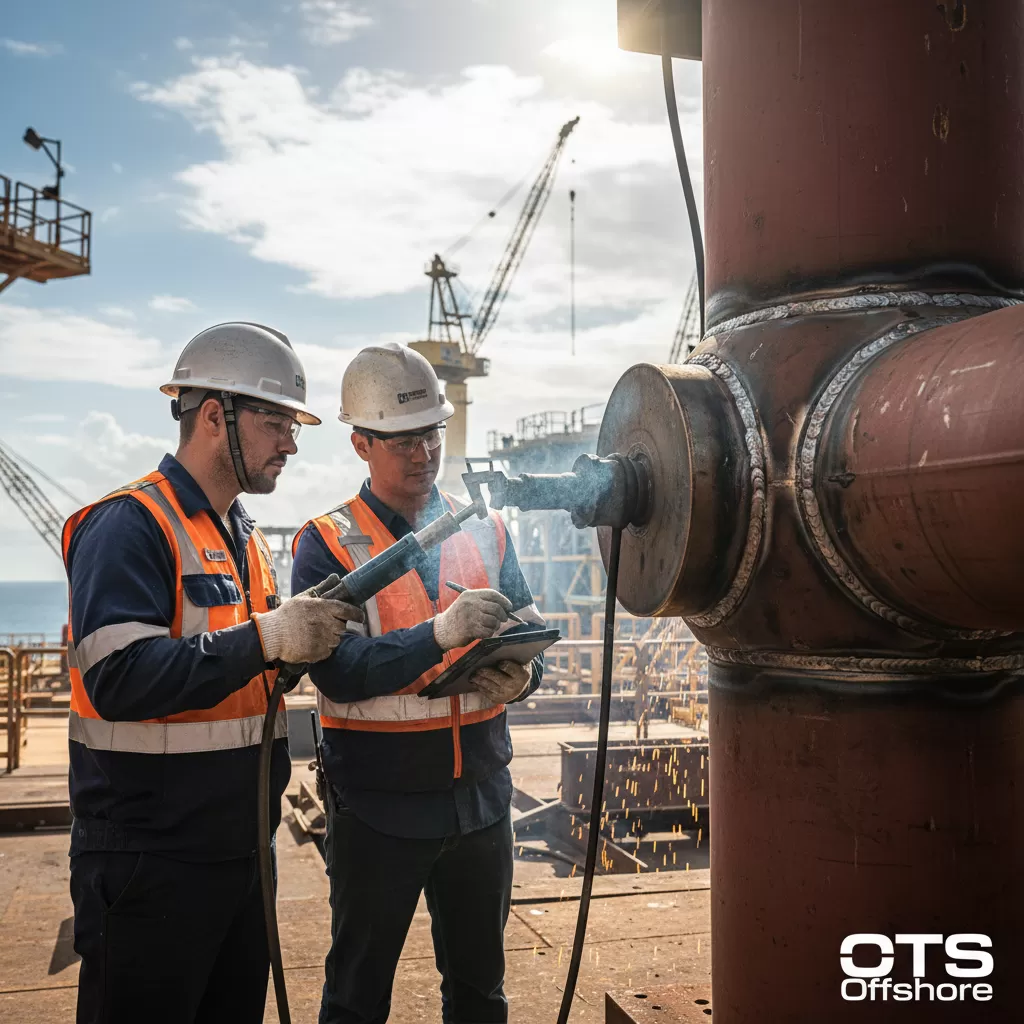The Importance of Blade Repair and Wind Turbine Maintenance Stages is paramount for ensuring optimal energy generation, operational longevity, and cost-effectiveness within the renewable energy sector. This article delves into the critical aspects of wind turbine blade maintenance, focusing on the indispensable role of blade repair and the comprehensive stages involved in a robust maintenance program.
The Paramount Importance of Blade Repair and Comprehensive Wind Turbine Maintenance
Understanding the Importance of Blade Repair and Wind Turbine Maintenance Stages is not merely a technical necessity; it’s a strategic imperative for the sustainable growth of the wind energy industry. Wind turbines, colossal feats of engineering designed to harness kinetic energy from the wind, are subject to relentless environmental stresses. Their primary energy-capturing components, the rotor blades, are particularly vulnerable. Without diligent attention, minor issues can escalate, leading to significant performance degradation, costly downtime, and even catastrophic failures. This article explores why proactive blade repair and meticulous maintenance are fundamental pillars supporting the efficiency, reliability, and economic viability of wind power generation. We will examine the intricate processes, the underlying technical considerations, and the profound impact these activities have on the overall lifecycle of a wind turbine asset.
Why is the Importance of Blade Repair Undeniable for Wind Farm Operations?
The Importance of Blade Repair is a cornerstone of effective wind farm management. Turbine blades, typically constructed from composite materials like fiberglass or carbon fiber, are constantly exposed to a harsh operational environment. This includes high wind speeds, abrasive particles (sand, dust, ice), UV radiation, and atmospheric moisture. These elements can induce various forms of damage, ranging from minor surface erosion and leading-edge wear to more severe cracks, delamination, and structural compromises.
Ignoring or delaying blade repair can have a cascading effect on turbine performance and the overall financial health of a wind farm. Damaged blades disrupt aerodynamic efficiency, leading to a reduction in power output. This directly translates to lower revenue generation. Furthermore, unchecked damage can propagate, increasing stress on other turbine components such as the gearbox, bearings, and tower. This can lead to premature wear and tear, necessitating more extensive and expensive repairs or replacements down the line. The Importance of Blade Repair lies in its ability to mitigate these risks, ensuring the turbine operates at its peak potential while safeguarding the integrity of its critical systems.
The economic implications are substantial. The cost of proactive blade repair is significantly lower than the cost of repairing major structural failures or replacing an entire rotor. Moreover, extended downtime due to blade-related issues directly impacts the Levelized Cost of Energy (LCOE), making the wind farm less competitive. Therefore, a robust understanding and implementation of the Importance of Blade Repair, coupled with comprehensive maintenance schedules, are vital for maximizing return on investment and ensuring the long-term success of wind energy projects.
The Unseen Heroes: Understanding Blade Damage Types and Their Impact
The Importance of Blade Repair is intrinsically linked to understanding the diverse forms of damage that can afflict these critical components. Each type of damage presents unique challenges and necessitates specific repair strategies.
– Leading-edge erosion: This is perhaps the most common form of blade damage. It’s caused by the continuous impact of rain, hail, sand, and other airborne particles, particularly at high wind speeds. Over time, this erosion can significantly alter the blade’s aerodynamic profile, reducing its efficiency and increasing noise levels.
– Surface cracks: These can appear anywhere on the blade surface due to manufacturing defects, operational fatigue, or impact events (e.g., lightning strikes). Small cracks, if left unattended, can grow and propagate, potentially compromising the blade’s structural integrity.
– Delamination: This occurs when the layers of composite material within the blade start to separate. It’s often caused by moisture ingress, thermal cycling, or excessive stress. Delamination weakens the blade structure, making it more susceptible to catastrophic failure.
– Lightning strike damage: Wind turbine blades are tall structures, making them prone to lightning strikes. These strikes can cause significant localized damage, including surface scorching, material breakdown, and penetration into the blade’s internal structure.
– Trailing-edge damage: While less common than leading-edge erosion, damage to the trailing edge can also impact aerodynamic performance and create noise.
– Blade root damage: The connection point between the blade and the hub is subject to immense forces. Damage here can be critical and requires specialized attention.
The proactive identification and timely repair of these damages, underpinning the Importance of Blade Repair, prevent minor issues from becoming major, costly problems, ensuring continuous and efficient energy generation.
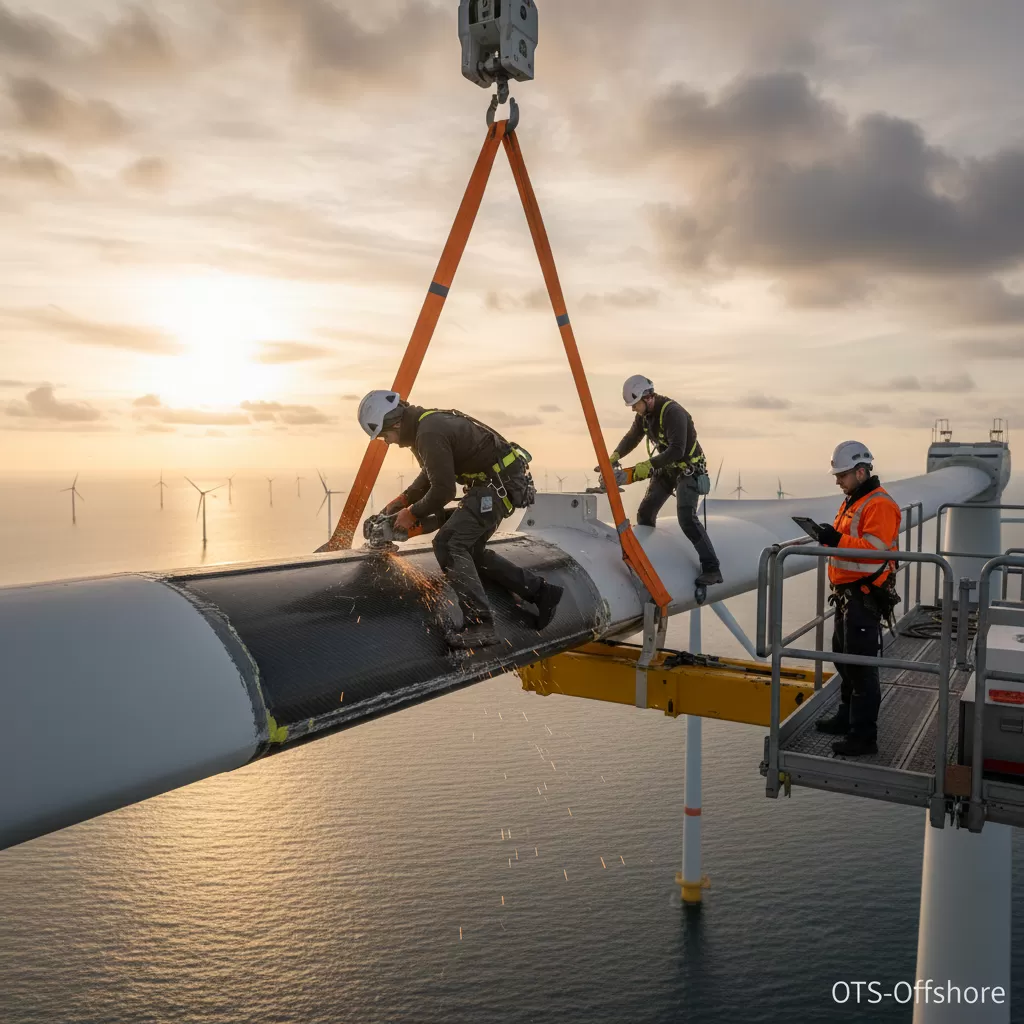
The Pillars of Proactive Maintenance: Wind Turbine Maintenance Stages in Detail
Effective wind turbine maintenance is a multi-faceted discipline, with the Importance of Blade Repair woven throughout its various stages. A well-structured maintenance program is crucial for maximizing uptime, optimizing performance, and ensuring the safety of personnel and equipment.
Stage 1: Routine Inspections and Monitoring
This is the foundational stage, where the health of the turbine is continuously assessed. The Importance of Blade Repair begins here with early detection.
– Visual inspections: Performed regularly, these can be from the ground using specialized equipment like drones with high-resolution cameras, or by trained technicians conducting climbs. They look for obvious signs of damage like cracks, chips, delamination, or foreign object debris.
– Remote monitoring systems: Modern wind turbines are equipped with SCADA (Supervisory Control and Data Acquisition) systems that collect vast amounts of operational data. Analyzing this data can reveal anomalies in performance that might indicate underlying issues, including those affecting the blades.
– Vibration analysis: Abnormal vibrations can be indicative of imbalance or structural issues within the rotor assembly, including blade problems.
– Acoustic monitoring: Changes in the sound profile of a turbine can sometimes signal aerodynamic disturbances caused by blade damage.
The objective of this stage is to identify potential issues before they become significant, thereby highlighting the Importance of Blade Repair as a preventative measure.
Stage 2: Condition-Based Maintenance (CBM) and Predictive Analysis
Moving beyond routine checks, CBM utilizes advanced techniques to predict when maintenance will be needed. This is where the Importance of Blade Repair becomes even more critical for proactive intervention.
– Advanced drone inspections: Drones equipped with thermal imaging, ultrasonic, or eddy current sensors can detect subsurface damage that might not be visible to the naked eye.
– Blade condition assessment reports: Detailed reports are generated, categorizing the type, severity, and location of any detected damage. This information directly informs the necessity and urgency of blade repair.
– Predictive modeling: Utilizing historical data and AI algorithms, maintenance teams can predict the likelihood of future blade failures based on current condition and operational history. This allows for the scheduling of repairs during periods of low wind or planned outages.
This predictive approach ensures that the Importance of Blade Repair is addressed strategically, minimizing unexpected downtime and maximizing resource allocation.
Stage 3: Planned Maintenance and Blade Repair Implementation
This is where the actual repair work takes place, directly addressing the issues identified in the preceding stages. The Importance of Blade Repair is fully realized here.
– Minor repairs: This can include surface patching of erosion, filling small cracks with specialized resins, or applying protective coatings to leading edges. These are often performed at height.
– Major repairs: For more significant damage like larger cracks or delamination, blades may need to be transported to a specialized workshop. This can involve complex composite repair techniques, reinforcement, and structural integrity testing.
– Blade cleaning and re-coating: Beyond actual damage repair, routine cleaning and re-application of protective coatings are crucial for preventing future erosion and maintaining aerodynamic performance.
– Hub and pitch system maintenance: While focusing on blades, it’s essential to inspect and maintain related components like the blade root, pitch control mechanisms, and bolts.
The successful execution of planned maintenance and the Importance of Blade Repair at this stage directly contribute to the turbine’s continued efficient operation.
Stage 4: Performance Optimization and Post-Repair Verification
After repairs are completed, the focus shifts to ensuring the turbine is performing optimally and that the repair has been successful.
– Aerodynamic performance testing: Measuring power output and efficiency after repair to confirm that the aerodynamic profile has been restored.
– Structural integrity checks: Non-destructive testing (NDT) methods are employed to verify that the repaired areas meet structural integrity standards.
– Ongoing monitoring: The repaired sections are closely monitored through subsequent inspections and SCADA data analysis to ensure the repair is holding and no new issues are developing.
This final stage solidifies the Importance of Blade Repair by confirming its effectiveness and ensuring the long-term reliability of the component.
The Essential Tools and Techniques for Effective Blade Repair
The successful execution of blade repair, a critical aspect of wind turbine maintenance, relies on a suite of specialized tools and advanced techniques. The Importance of Blade Repair is amplified by the sophistication and precision of these methods.
– Composite materials and resins: Modern blade repair heavily involves the use of advanced composite materials, including various types of fiberglass, carbon fiber fabrics, and specialized epoxy or vinyl ester resins. The selection of the appropriate material and resin system is crucial for ensuring the repaired area matches or exceeds the original strength and flexibility of the blade.
– Adhesives and sealants: High-performance adhesives and sealants are used to bond composite materials, fill voids, and prevent moisture ingress. These must be resistant to UV radiation, temperature fluctuations, and mechanical stress.
– Surface preparation tools: Proper surface preparation is paramount for any repair to adhere correctly. This includes grinders, sanders, and cleaning agents to ensure a clean, smooth, and receptive surface for the repair materials.
– Inspection technologies:
– Drones with high-resolution cameras, thermal sensors, and even LiDAR capabilities are indispensable for detailed aerial inspections, identifying damage from safe distances.
– Ultrasonic testing (UT) is used to detect internal defects like delamination or voids within the composite structure.
– Eddy current testing (ECT) is effective for detecting surface and near-surface flaws in conductive materials, though less common on composite blades themselves, it can be relevant for metallic components attached to the blade.
– Thermography can reveal subsurface damage or moisture ingress by detecting temperature variations.
– Access equipment: Depending on the height and location of the damage, various access methods are employed, including:
– Rope access techniques (industrial climbing) for agile and cost-effective access.
– Mobile elevated work platforms (MEWPs) or cherry pickers for lower sections.
– Suspended platforms or cradles for more extensive work.
– Weather protection: Temporary shelters or tents are often erected around the damaged area to shield the repair process from adverse weather conditions like wind, rain, or extreme temperatures, ensuring the integrity of the curing process.
– Quality control and testing equipment: This includes instruments for measuring material properties, ensuring proper mixing ratios of resins, and verifying the adhesion strength of the repaired areas.
The mastery of these tools and techniques underscores the technical expertise required, reinforcing the Importance of Blade Repair as a specialized field within wind energy operations.
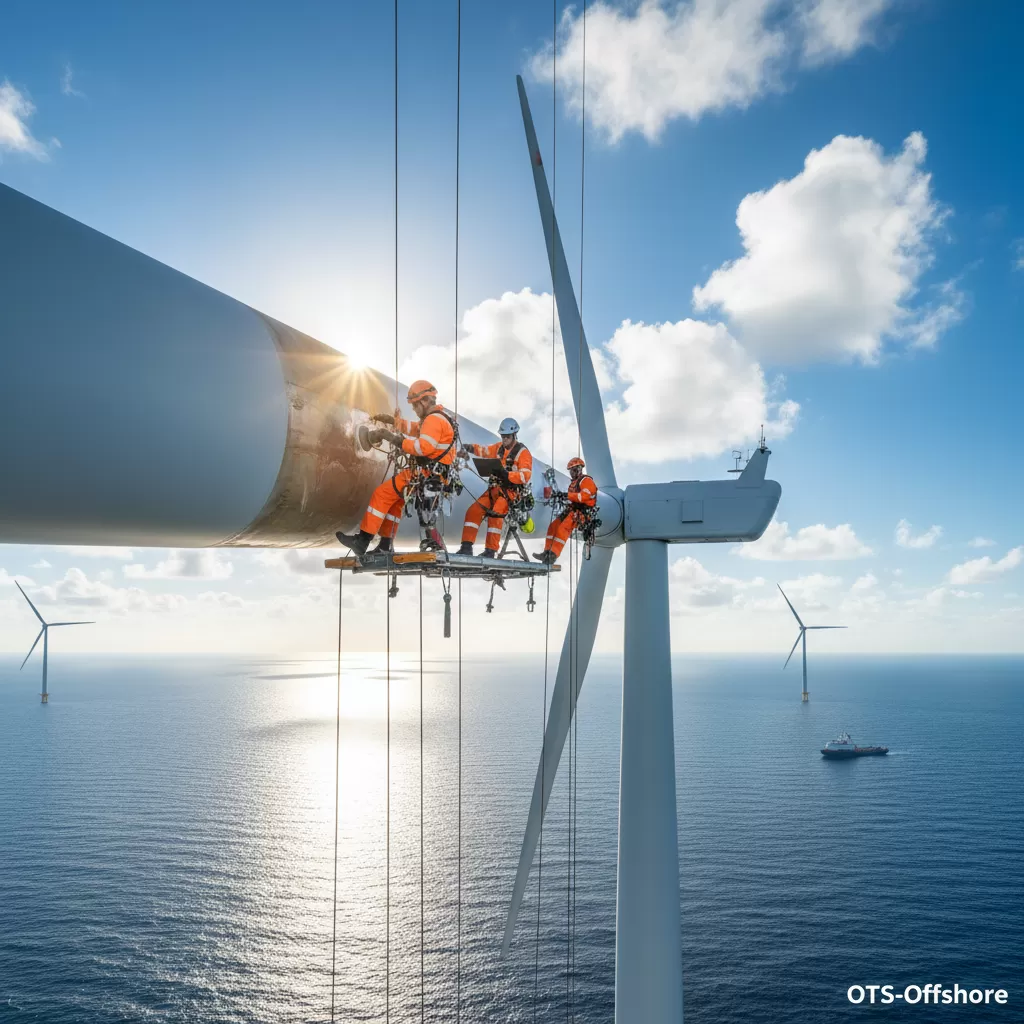
The Financial Implications: Cost Savings and ROI from Proper Blade Maintenance
The Importance of Blade Repair and comprehensive wind turbine maintenance directly translates into significant financial benefits for wind farm owners and operators. Neglecting these aspects can lead to substantial economic losses.
– Reduced unscheduled downtime: The most immediate financial impact of blade damage is the turbine’s inability to generate power. Unscheduled downtime means lost revenue. Proactive blade repair minimizes these occurrences, ensuring consistent energy production.
– Lower repair costs: Addressing minor blade damage early is considerably less expensive than dealing with major structural failures or component replacements. The Importance of Blade Repair lies in its cost-effectiveness as a preventative strategy.
– Extended turbine lifespan: Well-maintained blades contribute to the overall longevity of the wind turbine. By preventing premature wear and tear on the entire system, proper maintenance, including blade repair, extends the operational life of the asset, maximizing its return on investment over time.
– Optimized energy production: Damaged blades reduce aerodynamic efficiency, leading to lower power output. Restoring blades to their optimal condition through repair ensures maximum energy generation, thereby increasing revenue.
– Avoidance of catastrophic failures: In the worst-case scenario, severe blade damage can lead to catastrophic failure, resulting in the destruction of the blade, potential damage to other turbine components, the tower, and even posing safety risks. The Importance of Blade Repair is paramount in preventing such devastating and costly events.
– Improved LCOE: The Levelized Cost of Energy (LCOE) is a crucial metric for the economic viability of renewable energy projects. By reducing operational and maintenance costs and maximizing energy output, effective blade maintenance and repair contribute to a lower LCOE, making wind energy more competitive.
Investing in a robust blade maintenance program, recognizing the intrinsic Importance of Blade Repair, is not an expense but a strategic investment that yields substantial long-term financial rewards.
The ongoing evolution of materials science and repair methodologies continues to enhance the effectiveness and efficiency of blade maintenance, further solidifying the Importance of Blade Repair in the renewable energy landscape. As wind farms age and operate in increasingly challenging environments, the focus on meticulous upkeep and timely interventions will only grow.

